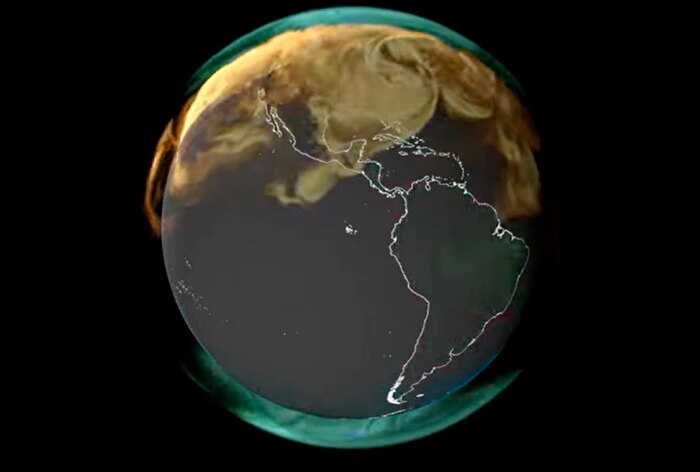NASA shared three separate videos about different parts of the world. Each of these videos shows the CO2 emissions of different parts of our world.
New Delhi: The National Aeronautics and Space Administration (NASA) has captured some shocking images showing how human activity is increasing the atmospheric concentration of carbon dioxide. For several centuries, human activity has released carbon dioxide into the atmosphere. It is also a well-known fact that carbon dioxide affects heat radiation to space and contributes to global warming.
NASA shared three separate videos about different parts of the world. Each of these videos shows the CO2 emissions of different parts of our world. The videos further highlight carbon emissions and carbon absorption by trees and oceans.
According to NASA, this visualization shows the CO2 added to Earth’s atmosphere over the course of the year 2021, broken down into four major contributors: fossil fuels in orange, burning biomass in red, land ecosystems in green, and the ocean in blue.
Here are some of the key takeaways from the videos:
- Carbon emissions from burning fossil fuels are represented by the color orange.
- Red stands for biomass combustion.
- Green represents terrestrial ecosystems and blue represents oceans.
- Blue dots indicate where carbon dioxide is absorbed by oceans
- Green dots represent CO2 uptake by trees.
- The concentration of carbon emissions in North America, particularly in the US Northeast. These are the pollution hotspots.
According to Climate.gov, “Without carbon dioxide, Earth’s natural greenhouse effect would be too weak to maintain the Earth’s average surface temperature above freezing. By adding more carbon dioxide to the atmosphere, humans are amplifying the natural greenhouse effect, which is raising global temperatures.”
“New computer modeling techniques in NASA’s Global Modeling and Assimilation Office allow us to dissect our atmosphere and understand some of the key contributors to this runaway insulator,” NASA says in the blog post.


